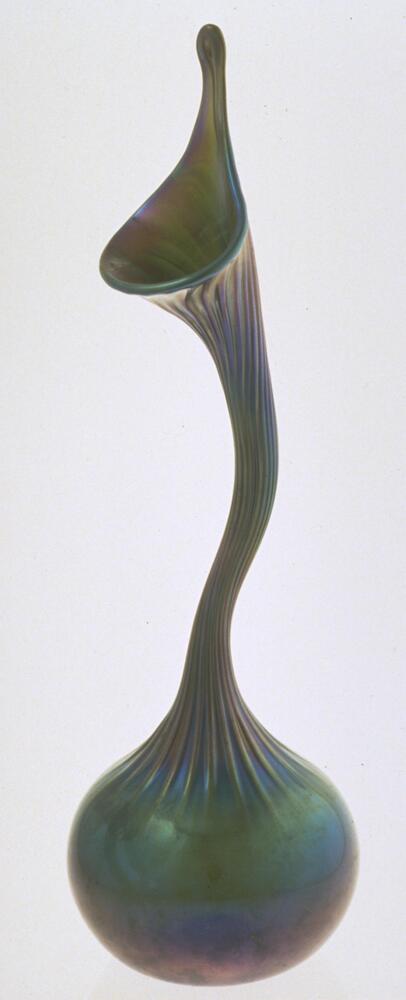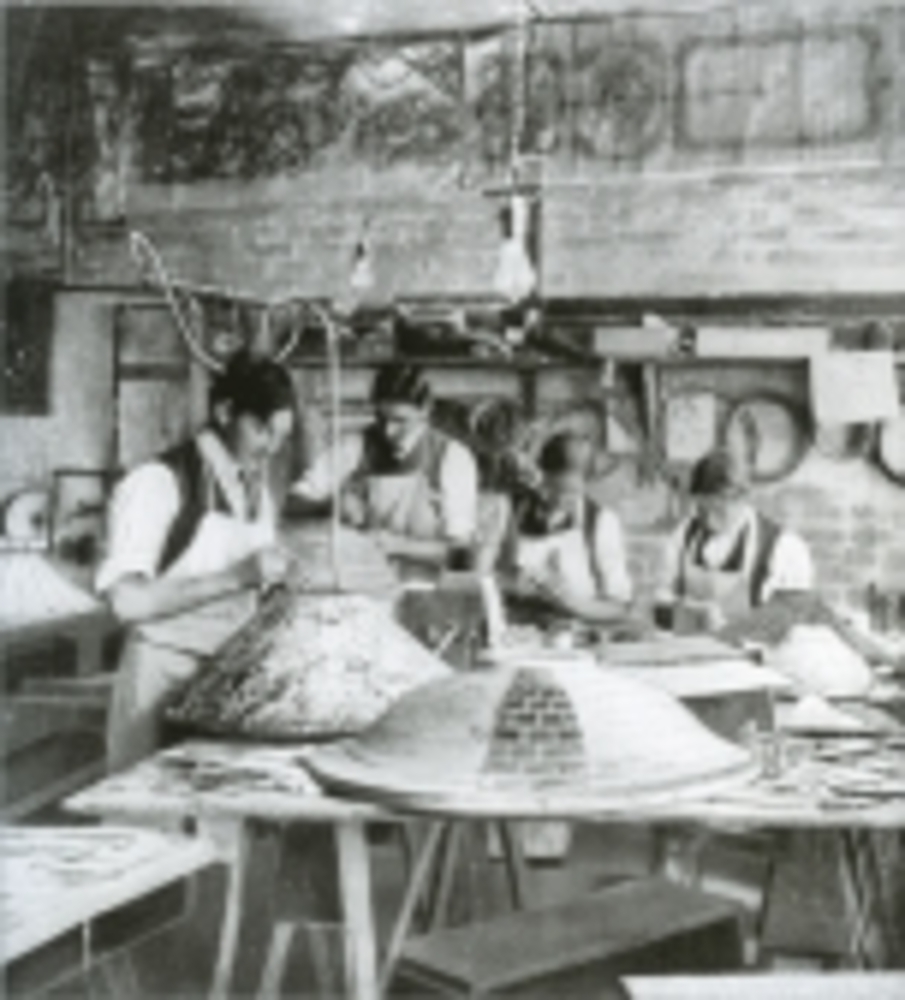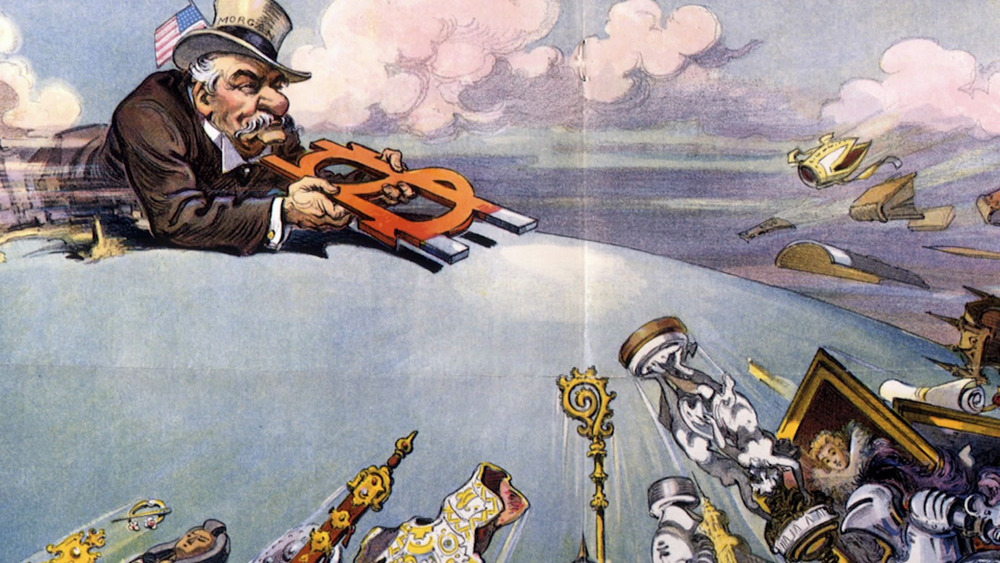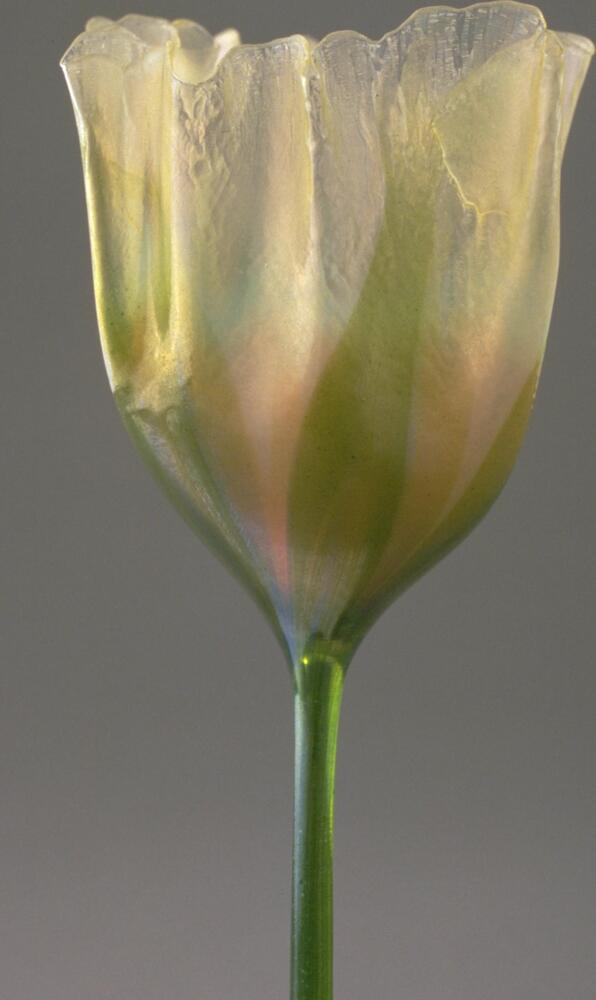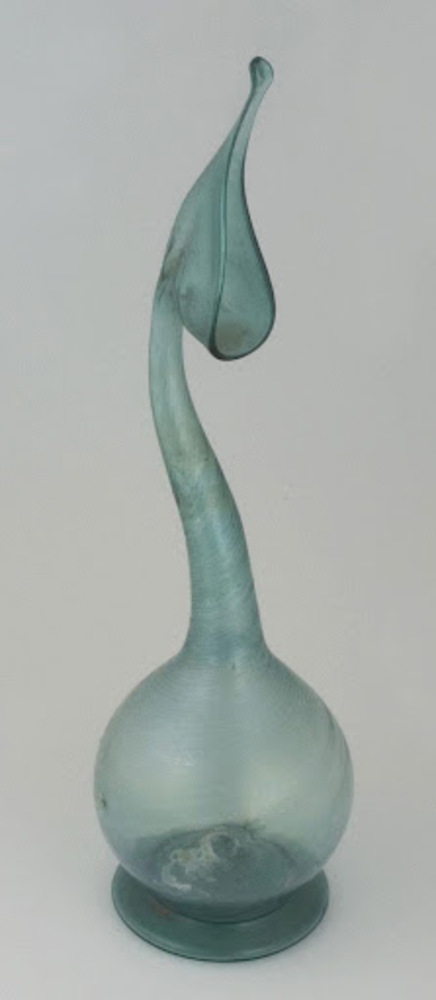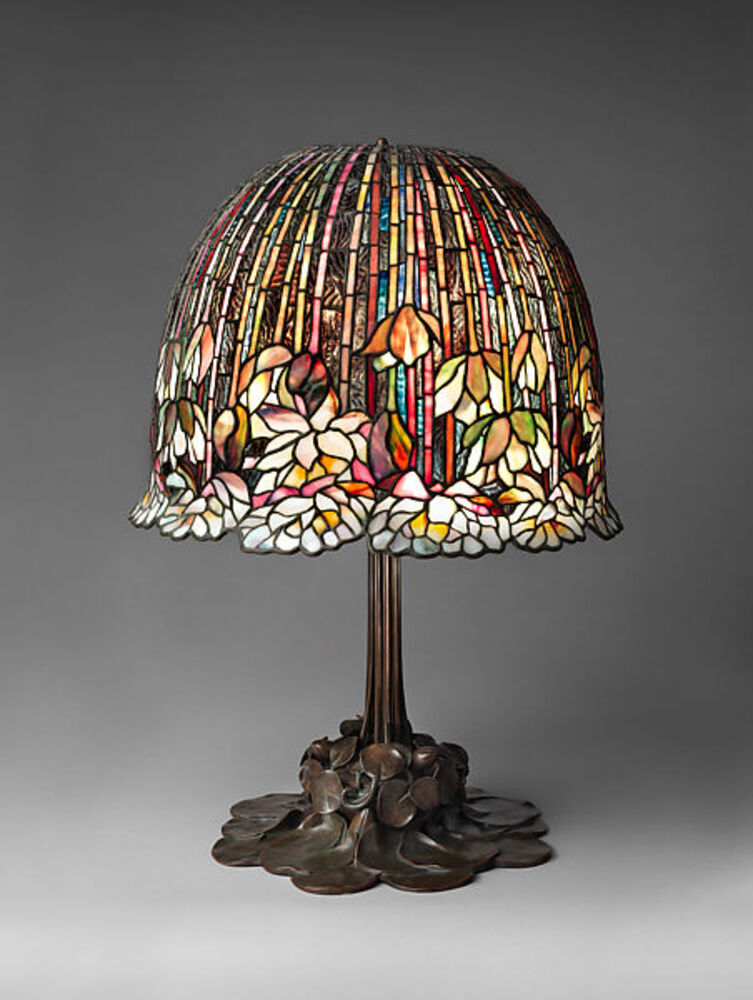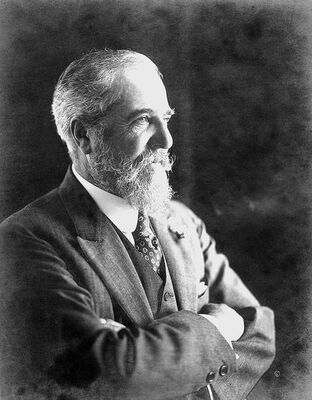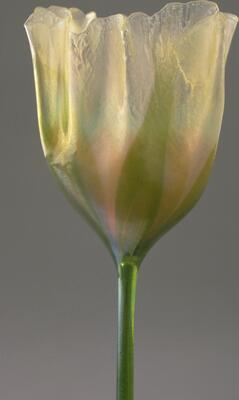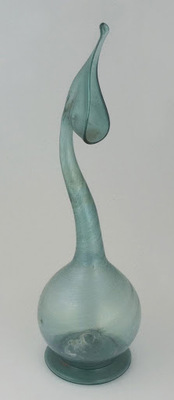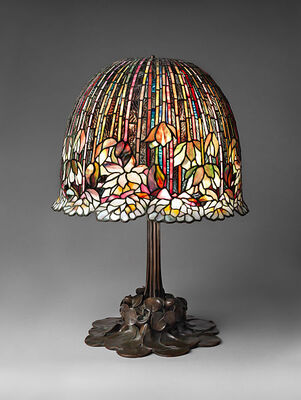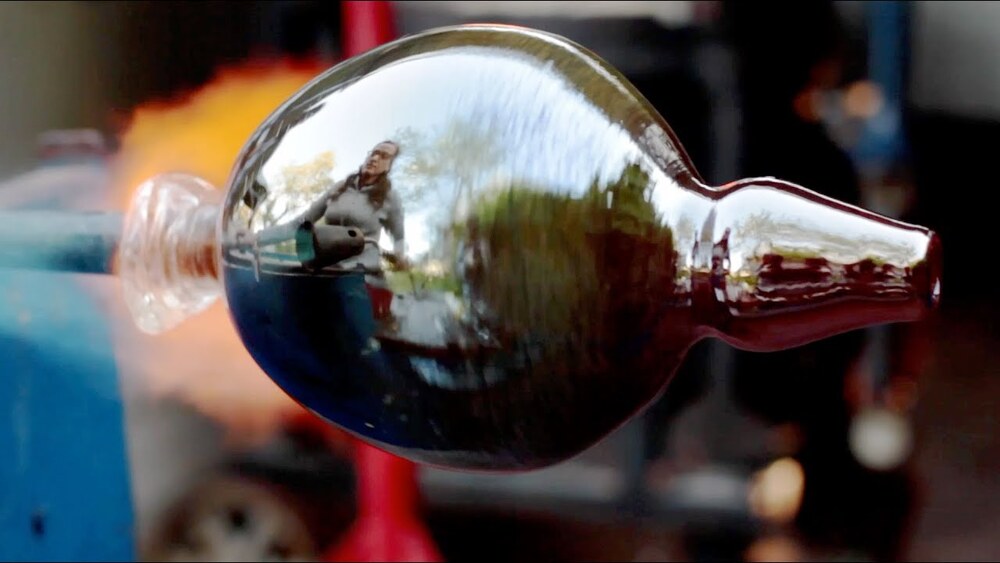Exotic Artwork in America's Gilded Age: The Persian Rosewater Sprinkler by Louis Comfort Tiffany
This research is presented as a project for an Art History class at the University of Michigan in Winter 2022.
Introduction
After the Civil War, art and American society were changing rapidly. The Gilded Age brought about wealth and international travel, fostering cultural exchanges that would lead to the rise of the Art Nouveau and Aesthetics movements. Louis Comfort Tiffany and his innovative works, including the Persian Rosewater Sprinkler, brought the opulence and elegance of the time into the home space, creating interior décor pieces that catered to the exotic fascinations of the American elite.
Louis Comfort Tiffany: An Innovative Artist
Louis Comfort Tiffany (1848-1933) was an American Art Nouveau artist and interior designer who specialized in leaded-glass, metal, enamels, pottery, jewelry, furniture and lighting during the late 19th century and early 20th century. He is the son of Charles Lewis Tiffany, who founded Tiffany & Co. which is the famous luxury home goods and jewelry company that is still around today.
Early on in his career, Tiffany traveled through Europe where he was inspired by the Gothic Revival, English glass work, and the Art Nouveau movement in France. He also traveled to Morocco, Egypt, Tunisia, and Algeria which heavily influenced him to include aspects of the Persian Art he saw in museums during his travels into his own art.
Outside of Tiffany & Co., most of Louis' works were associated with his own firm: Tiffany Studios. During the 1870’s, Tiffany turned his focus from painting to stained glass and decorative artwork, eventually becoming recognized internationally as a leading glass maker. At the turn of the century Tiffany included a focus on lamps and lighting, using leaded glass.
He also started creating enamel works and pottery which were inspired by the French pottery, English glasswork, and Persian art he saw during his travels. Around this time Tiffany also started creating jewelry and went on to later be appointed as the Art Director for Tiffany & Co. after his father died. Tiffany was one of the most influential glass artists of the late 19th century and was best known for his leaded glass techniques.
The Gilded Age
The Gilded Age was a period of American social and technological development that spanned much of the late 19th and early 20th centuries, ending around WWI. In this time the United States saw exponential economic and industrial growth, leading to a drastic shift in the American national identity and perceptions of art and solidifying the United States' place as a global power. Progress within the railroad, oil, and telegraph industries expanded the ranks of the middle and upper classes, funding the consumerist ideals of this era. One place to express this exorbitant wealth and opulent status was the arts.
Improvements in transportation and communication brought wealthy Americans and artists to Europe and beyond, opening up opportunities for cultural and artistic exchange. Before the Civil War, art was heavily associated with nationalistic and moralistic values reflecting the sentimental and patriotic nature of the time. However, after the War, American artists and patrons alike began to appreciate the new and exotic trends of the globalized art community. This shift was partially driven by the rise in World’s Fairs, which showcased works from all around the world, inspiring artists to capture the diversity of their trade. Exoticism and the Art Nouveau (‘New Art’) movement that arose from this mixing greatly influenced Tiffany and his work with the Persian Rosewater Sprinkler.
Louis Tiffany was an American master within the Art Nouveau movement, which was established in France during the Gilded Age. The movement found its inspiration in natural and geometric designs, morphing utilitarian objects into pieces of fine art through quality craftsmanship. This transition sought to upend the accepted hierarchy of artistic works where sculptures and paintings were seen as superior to the decorative arts. Tiffany’s mastery of Art Nouveau techniques can be seen in his use of natural landscapes in the stained glass works and nature-based themes within his studio’s interior décor art designs.
Exoticism in Art
Exoticism evolved from American fantasies of the unfamiliar world abroad. During the Gilded Age many artists and wealthy families expatriated to Europe, but beyond those well-traveled borders the mysteries of Middle Eastern and Asian countries had yet to be explored. Henry James wrote in his book The American (1877) of Americans’ imperialistic fascination stating that “we can deal freely with forms of civilization not our own, can pick and choose and… claim our property wherever we find it”. Archaeologists of the time set their sights on Egypt, missionaries gathered in the Middle East, and many artists found inspiration in Japan and China.
Tiffany along with many other artisans were studying abroad in art education and finding artistic inspiration as they traveled around Europe. Art Nouveau existed as a cultural meshing between different lineages and geographies of art, allowing artists to express their new knowledge of artistic diversity from their travels. The political and societal climate of America at the time, which focused on overconsumption and capitalism, drove many Americans to find solace in the arts and cultures of un-industrialized and uncorrupted nations. Japan was seen as a medieval society, functioning solely for the promotion of aesthetics and spirituality. Tiffany, an avid collector of ancient and exotic arts, credits his exploration of North Africa as a turning point in his use and understanding of color saying, “I returned to New York, wondering why we made so little use of our eyes” (Miller, 2008). These trips are likely where he was exposed to the original design of rosewater sprinklers in Persia.
Tiffany Studios
Tiffany Glass Company began with non-luster glass creations but after utilizing luster “shine” art, such as the Persian rosewater sprinkler featured in the UMMA exhibit, the company’s popularity grew internationally. The luster glass art was more expensive to create than the traditional non-iridescent glass but after the success of the initial pieces the company incorporated the style into the Tiffany collection.
The cost for every art design created by Tiffany depended on the size, height and diameter of the object. Since many of Tiffany’s designs were handcrafted out of speciality materials, the intended audience for arts such as the sprinkler was economically upper-class individuals who were inspired by the luxurious art and influenced by the internationalist ideals of the Gilded Age. However, one way that Tiffany Studios contributed to commercialization and accessibility of expensive home décor items was through the mechanization of quality craftsmanship, making many of the designs he produced available on a larger scale.
The company constantly evolved items into luxury and home décor art. For instance the mosaic windows created for the 1893 Chicago World’s Fair provided the foundation for Tiffany to begin experimenting with other glass work designs ranging from the rosewater sprinkler to an assortment of lamps, vases, and even champagne glasses. Though these works were primarily meant to be usable household items, Tiffany worked in tandem with his designers to always create pieces that aligned with what they saw as art, focusing on vibrant colors and natural forms.
Decorative Arts and the Idea of Home
Decorative arts and the surrounding arts integrated interior designs into the art space in various ways, and were likely influenced a great amount by the sentimentalism art era and sculpture as the time. The Rosewater sprinkler was created in the Gilded Age which exists as a time distinct to art itself because economic expansion overlapped into arts, and people at that time were very interested in adorning jewelry, fashionable items, luxurious interior design, international genres. What Tiffany Studios offered to the consumers were decorations that stayed true to the nature-art foundation while also utilizing new materials to create glass art in a way that allowed the company to expand into the luxuries of art but never change the theme of the decorations they created.
The opulence and exoticism of the Gilded Age were integral facets influencing the ways that wealthy Americans decorated their homes in this era. Homes of the upper class grew larger, with many gathering spaces to showcase their material wealth. What better way to portray one's international status than to incorporate designs acquired from around the world into the house itself, where American's could experience the "barbaric splendor" of exotic lands from the comfort of their parlors (Sir John Burton; from Oshinsky, 2004). This era saw the rise of Egyptian revival, displaying stylistic adaptations of Egyptian architecture, jewelry, and interior designs around the American home. Other exotic adaptations included Persian furniture and Turkish smoking rooms. Tiffany believed that the design of an interior space should strive for aesthetic harmony, which led his Studio to diversify their production to many pieces that could be found in the home, including lamps, vases, desks and even silverware.
The Persian Rosewater Sprinkler
The Persian Rosewater Sprinkler is fascinating in structure and can be described with an ordinary analogy such as swan-like but can also be described as tree-like, orchid/floral-like, even qualities resemblant enough to say seahorse-like, due to the elongated section of glass between the base and spout. Tiffany Studios consistently created art that mimicked nature, from animals, plants, and seasonal colors, and the majority of the artworks are in the essence of nature.
The utility of rosewater sprinkler is something always in question when considering the object, not only is the shape of the design but what it was created for. In the Middle East, It was made to be a container for rosewater to disperse fragrance within the home, but it is likely that the original use did not follow the design as it travelled across the Atlantic to the homes of wealthy Americans.
This piece is an excellent example of one of Tiffany's innovative additions to the art world: Favrile glass. This type of glass was created by mixing in pigments and other metals while the glass was still hot, incorporating the color into the glass form itself. The coloring happened in the furnace, contrary to traditional techniques in which the color was added after the molding process. Tiffany was awarded many honors around the world for works like the Persian Rosewater Sprinkler along with other vases and designs in which this technique was used. You can see how the colors change from greens to purples to blues with the shape of the sprinkler, adding to the exotic appeal of this glassmaking technique.
Tiffany’s studio made multiple iterations of Persian Rosewater Sprinklers varying in shape and color, but still remaining in a similar silhouette. They all feature captivating iridescent colors and were hand made by Tiffany’s studio. Some incorporated natural themes such as peacock feather patterns.
------------------------------------------------------------------------------------------------------------------------------------------------------
Bibliography
"ART NOTES." 1895. New York Times (1857-1922), Oct 17, 4.
https://proxy.lib.umich.edu/login?url=https://www.proquest.com/historical-newspapers/ar
t-notes/docview/95323032/se-2?accountid=14667.
Doros, Paul E. 2013. “The Art Glass of Louis Comfort”. Thames & Hudson.
"DECORATIVE WORK.: THE CRAZE AND DEMAND FOR JAPANESE WARE. SOME
SPECIMENS OF THE HANDIWORK AND HOW TRADE GORGEOUSLY TOUCHED UP INDIVIDUAL TEAPOT. A SWORD COVERED FROM POINT TO HILT WITH CARIOUS CHINESE COINS." 1887.Cincinnati Enquirer (1872-1922), Jun 26, 12. https://proxy.lib.umich.edu/login?url=https://www.proquest.com/historical-newspapers/decorative-work/docview/882708916/se-2?accountid=14667.
Eidelberg, Martin P., and Nancy A. McClelland. Behind the Scenes of Tiffany Glassmaking: The Nash Notebooks: Including Tiffany Favrile
Glass by Leslie Hayden Nash. St. Martin's Press, 2001.
This citation is of a book written about Tiffany & co. that describes much about the glassmaking process and offers additional information about Louis Tiffany as well. It very thoroughly details the company history as well as its development of glass art.
Frelinghuysen, Alice Cooney, and Monica Obniski. “Louis Comfort Tiffany (1848-1933).” The Met, July 2007. https://www.metmuseum.org/toah/hd/tiff/hd_tiff.htm.
This essay is a biography on the career of Louis Comfort Tiffany and describes the progression of his career and impact he had on art history and art trends. It cites several examples of Tiffany's work chronologically throughout his career. This essay also highlights the major accomplishments and events inTiffany's career that are relevant to the part of his work we are researching.
Georgia Museum of Art . (2020, May 6). Exploring Tiffany: How to Make a Decorated Blown Glass Vase. YouTube. Retrieved April 21, 2022, from https://www.youtube.com/?gl=E
This is the link to the video created by Georgia Museum of Art for youtube and it is a visual demonstration of how Tiffany and Co. created glass art. The video is of a person creating a handmade vase but still it is a very similar process of creating blown glass art like the company.
Haskins, J. 2013. “Louis Comort Tiffany: Aesthetic Staple of Art Nouveau?”. New Britain
Museum of American Art. https://nbmaa.wordpress.com/2013/04/17/louis-comfort-tiffany-aesthetic-staple-of-art-nouveau/
This source gives some background on Art Nouveau, explaining the philosophical ideals and design techniques used within the movement. Another page is dedicated completely to Louis C Tiffany. First with a summary of his background and then a timeline of some of his works, this source provides a general outline of Tiffany’s life and the ways that his art fit into the Art Nouveau style. Though this online foundation seeks to make art more accessible, it does not go into much depth on these subjects, giving a bare-bones summary of Tiffany and the movement.
HOUSEHOLD DECORATION: A GROWING DESIRE TO MAKE THE HOME BEAUTIFUL
EVOLUTION OF DOMESTIC ORNAMENT PROGRESS IN DECORATIVE ART
SINCE THE CENTENNIAL-- HOLIDAY DISPLAYS OF BRIE-A-BRAC IN OUR SHOP WINDOWS HOMES IN THIS COUNTRY POTTERY PAINTING SOLID EASTLAKE DESIGN HOLIDAYS ARE NEAR AT HAND PRETTY CHRISTMAS PICTURES A CHEERY HOLIDAY LOOK HUNG WITH RICH CARPETS A BIT OF DECORATIVE ART. 1879. San Francisco Chronicle (1869-1922), Dec 14, 1879. https://proxy.lib.umich.edu/login?url=https://www.proquest.com/historical-newspapers/household-decoration/docview/575419047/se-2?accountid=14667
Kilroe, X. 2019. "Louis Comfort Tiffany Artist Overview and Analysis". The Art Story.
https://www.theartstory.org/artist/tiffany-louis-comfort/.
Mayfair Gallery Guides. 2018. “Orientalist Paintings: 19th Century Fantasies of the East”.
Mayfair Gallery.
https://www.mayfairgallery.com/blog/orientalist-paintings-19th-century-fantasies-east/
Miller, Berlo, Wolf and Jennifer Roberts. 2008. "American Encounters: Art, History, and Cultural Identity". St. Louis: Washington University Libraries.
Monteiro, George. 2005. “Henry James’ Californian.” American Literary Realism 38, no.
1: 47–57. http://www.jstor.org/stable/27747182.
Moonan, W. (2000, November 10). A triumph of Orchids. The New York Times. Retrieved April 21, 2022,
https://www.nytimes.com/2000/11/10/arts/antiques-a-triumph-of-orchids.html
This article is about some of the jewelry that Tiffany & co. introduced at the World's Fair in Paris in 1889 before creating the Persian rosewater sprinkler. The brooches may have been an inspiration for the sprinkler design, but more importantly it shows the company’s interest in nature-like colors and patterns to be a connective aspect between much of their glass art and decorative items.
Oshinsky, Sarah. 2004. “Exoticism in the Decorative Arts”. Hillburn Timeline of Art History.
The Met. https://www.metmuseum.org/toah/hd/exot/hd_exot.htm
The Editors at Encyclopedia Britannica. “Louis Comfort Tiffany,” Britannica, February 14, 2022, https://www.britannica.com/biography/Louis-Comfort-Tiffany.
This article contains information about Louis Comfort Tiffany’s career and explains each art medium that he explored throughout his life. It provides images of Tiffany’s artwork along with links to related art history subjects. Encyclopedia Britannica is a reliable scholarly source that consistently undergoes updates with corrected or updated information.
The Charles Hosmer Morse Museum of Art. “Tiffany Studios”. Morse Museum. Accessed on
April 1, 2022.https://www.morsemuseum.org/louis-comfort-tiffany/tiffany-studios
Washington University in St. Louis. “Global Vistas: American Art and Internationalism in the
Gilded Age”. Mildred Lane Kemper Art Museum. Washington University in St. Louis.
https://sites.wustl.edu/globalvistas/introduction/
1899-04. "Illumination in the Home (Second Paper)". The House Beautiful 5, no. 5 (224-230).
https://archive.org/details/sim_house-beautiful_1899-04_5_5/page/218/mode/2up?q=Tiff
1900. Tiffany Favrile Glass - Legion D'Honneur-Grand Prix = Paris 1900. New York: Tiffany
This source is especially interesting because it provides some background on the Favrile glass making techniques and it seems as though it was written or published by the furnace that produces the glass. This source has drawings indicating the dimensions of many of Tiffany's glass pieces as well as a list of where the works had been exhibited.
Created For
K-12 EducatorK-12 Student
Museum Visitor
UMMA Docent
UMMA Staff
University Faculty
University Student
Rate this Resource
AVG: 0 | Ratings: 0
& Author Notes
All Rights ReservedLast Updated
April 21, 2022 10:42 p.m.Report
Reporting Policy
